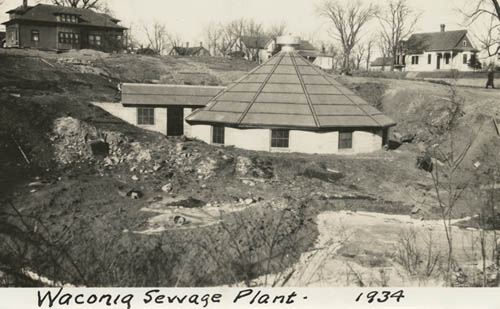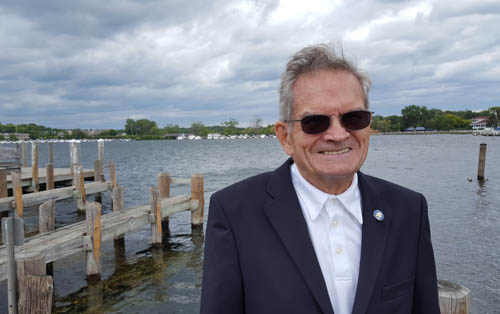
Dr. Russ Susag’s mom was proud of her son’s status as a University of Minnesota assistant professor and research fellow. But she couldn’t bring herself to say what subject he taught. Ladies didn’t say “poop.”
Susag recalls the fragmented system of local treatment plants in the region at the time, mostly performing poorly, as “a disaster.”
“Of the 33 plants we purchased, only three or four met environmental standards,” he said. “Most of them simply weren’t up to the task, discharging inadequately or untreated sewage into area lakes and rivers.”
“Sewage and sewage treatment aren’t household words or subjects most people want to talk about,” said Susag, a member of the Metropolitan Council (2003-2008), and years earlier, a manager for the Metropolitan Sewer Board. The Minnesota Legislature established the board in the late 1960s to consolidate wastewater collection and treatment in the Twin Cities area, giving the Council planning and budgetary oversight.
Another contributor of pollution was on-site septic systems populating the growing suburbs. The condition of the state’s ninth largest lake, Lake Minnetonka, was particularly worrisome.
“My dad had a home on Phelps Bay on Lake Minnetonka,” said Susag. “There’s no question that the on-site septic tank leaked raw sewage into the groundwater and lake. The region could not continue to grow and develop under those circumstances. It was a crisis in terms of future development and the prospects for the region’s economy.”
Health of Lake Minnetonka revived
 And so, Susag and his colleagues at the Sewer Board went to work: acquiring plants to decommission or improve, building new plants and miles of interceptor sewers, monitoring water quality, and establishing financing tools to pay for it all.
And so, Susag and his colleagues at the Sewer Board went to work: acquiring plants to decommission or improve, building new plants and miles of interceptor sewers, monitoring water quality, and establishing financing tools to pay for it all.
Today’s regional system includes eight plants and more than 600 miles of interceptor sewer pipes. In total, the plants treat 250 million gallons of wastewater a day from 109-metro area communities and 2.6 million residents.
Treatment plants in Excelsior, Mound, Orono, Victoria and Wayzata have long since closed, and Lake Minnetonka communities now convey to the Blue Lake plant in Shakopee for treatment and discharge into the Minnesota River.
Today, Lake Minnetonka remains a hotbed of boating, fishing, sailing and other recreational activity, and home to some of the state’s most affluent residents. It typically gets high marks, overall, for water quality and water quality improvements.
Collaboration leads to much greater efficiency
.aspx) The Sewer Board’s “First Report: 1969 to 1972,” shares credit for the heavy lift with many partners, including local officials and units of government.
The Sewer Board’s “First Report: 1969 to 1972,” shares credit for the heavy lift with many partners, including local officials and units of government.
“From a city perspective, the consolidated regional system takes some of the significant infrastructure costs off the backs of individual cities,” said Craig Dawson, a former city official for Excelsior and Shorewood. “That’s huge. And more efficient.”
Not to mention the benefits of cleaner water to the environment, recreation, fishing, property values, livability and local economy.
Today, Dawson is Director of Research and Monitoring for the Minnehaha Creek Watershed District. He says the region’s vast water resources are part of our culture; part of who we are.
“The commitment to water quality in this region and preserving our abundant amenities speaks to the quality and character of the people who live here,” said Dawson.
 Susag agrees.
Susag agrees.
“Residents can be proud of the system we collectively put in place and continue to maintain and improve,” he said. “It comes from a proud tradition in this region of civic infrastructure.”
Did you know...?
Residents of the Twin Cities metro area pay the seventh lowest average retail rate in the U.S. for sewage treatment, compared with 25 peer regions that treat at least 100 million gallons of wastewater each day.
(Source: Most recently published survey by the National Association of Clean Water Agencies, 2013)
More information
What’s that in the sewer?
Items that have shown up on the initial bar screens at the Metro Wastewater Treatment Plant: